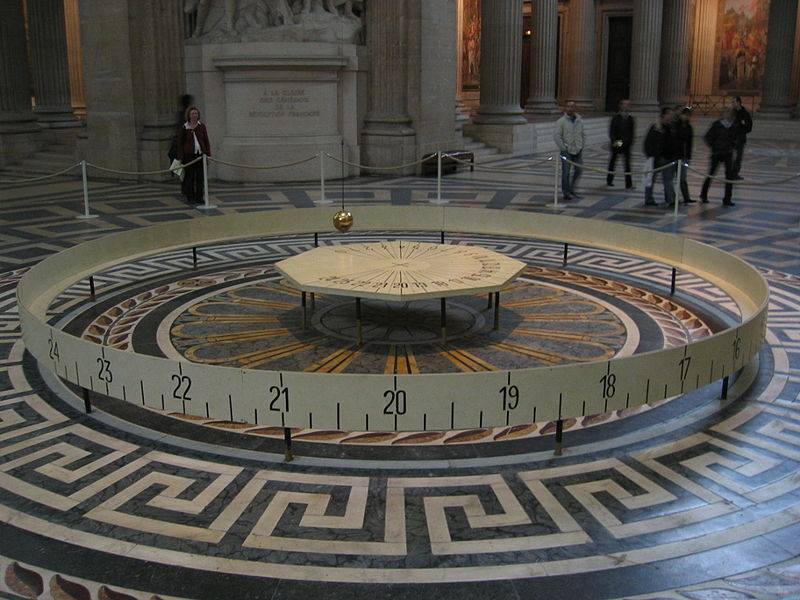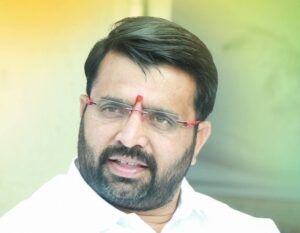March 26 Is The Day When The World Knew ‘The Earth Turns’; Know About Foucault Pendulum And Pune Connection

Manasi Saraf Joshi
Pune, 26 March 2021: It was March 26 in 1851 when the world realised that the “Earth can turn”. Well, like every invention and discovery has its own story, this too has one.
Today, after 170 years of this incident, because of this invention we have navigation tools like GPS and others, yet without Foucault, we cannot move further.
The article also has an interesting story about the Foucault pendulum and Pune connection.
So what is the story behind Earth turns or Foucault pendulum!
Director of Nehru Planetarium, Mumbai Arvind Paranjpye tells us an interesting story about it. He said, “Foucault was a son of a publisher in Paris. His mother wanted him to pursue a career in medicine however, because of his hemophobia (extreme and irrational fear of blood) so he studied physics”.
Paranjpye further states, “Foucault used to study at home and would note down all his observations in a journal. On one cold morning in January 1851, he realised that the pendulum is suspended such that it is free to swing in any direction, the plane in which it is swinging will not change. But, if the Earth is rotating on its axis, then this plane will appear to rotate with respect to the Earth. The rotational speed of the plane will depend on the latitude of the place.”
“He refined his set up and made a dramatic announcement of his discovery. He called a gathering of élite Parisian scientists to the Paris Observatory on 3 February, declaring, Come and Watch the Earth turn,” Paranjpye added.
“The demonstration was a grand success. He further extended this pendulum experiment to a practical application and made a device which he called ‘Gyroscope’ that helped navigators to find directions accurately. A gyroscope became an essential instrument on every seagoing vessels and aircraft, including Hubble Space Telescope. It was replaced only after the advent of GPS. One finds mention of Foucault and gyroscope in almost every maritime museum.”, Paranjpye mentioned.
However, Foucault was not accepted in the academic circle of French scientists as he had no formal education and training in science.
Pune connection
Sharing an interesting incident way back in the 1990s Paranjpye says, “renowned physicist Jayant Narlikar used the ‘Foucault Pendulum’, which was installed at Inter-University Centre for Astronomy and Astrophysics (IUCAA). Every summer, Narlikar used to call the high school students and would tell them to do a project to observe plane of the pendulum changing with time and then find the latitude of Pune.
“Sometime in the mid-’90s twice, the students came with the readings that the level didn’t change. Narlikar got confused. He then himself went to check the fact and to the surprise of all due to summer heat the metal (steel) wire had expanded. Thus the readings were differing. We later changed the height and adjusted the level”, he said.
“Dileep Sathe, a junior college Physics teacher used to visit IUCAA without fail on National Science Day (February 28) and would explain the pendulum process in very simple words to the students and visitors”, Paranjpye said.
Sathe said, “the Foucault pendulum is an astronomical instrument but even the students of junior colleges find it difficult in understanding how it proves that the Earth rotates. There are two main reasons for this
(i) the Foucault pendulum is not included in junior college physics
(ii) secondly the plane of oscillation of the pendulum completes one rotation every day if it is located on the pole. But at other places say like at Pune (latitude is 18.5 ¬¬°N) takes about three days for one rotation.
Sathe also added that this fact conflicts with our common knowledge that the earth completes one rotation in one day. A simple model which he conceived is used in summer vacation programmes in Pune.
In-shots
In India, the National Council for Science Museums had developed Foucault’s Pendulum based on electromagnetic pulse. One such pendulum was ‘put to swing’ to mark the dedication of the Inter-University Centre for Astronomy and Astrophysics (IUCAA) by Prof S. Chandrasekhar on 28 December 1992.






